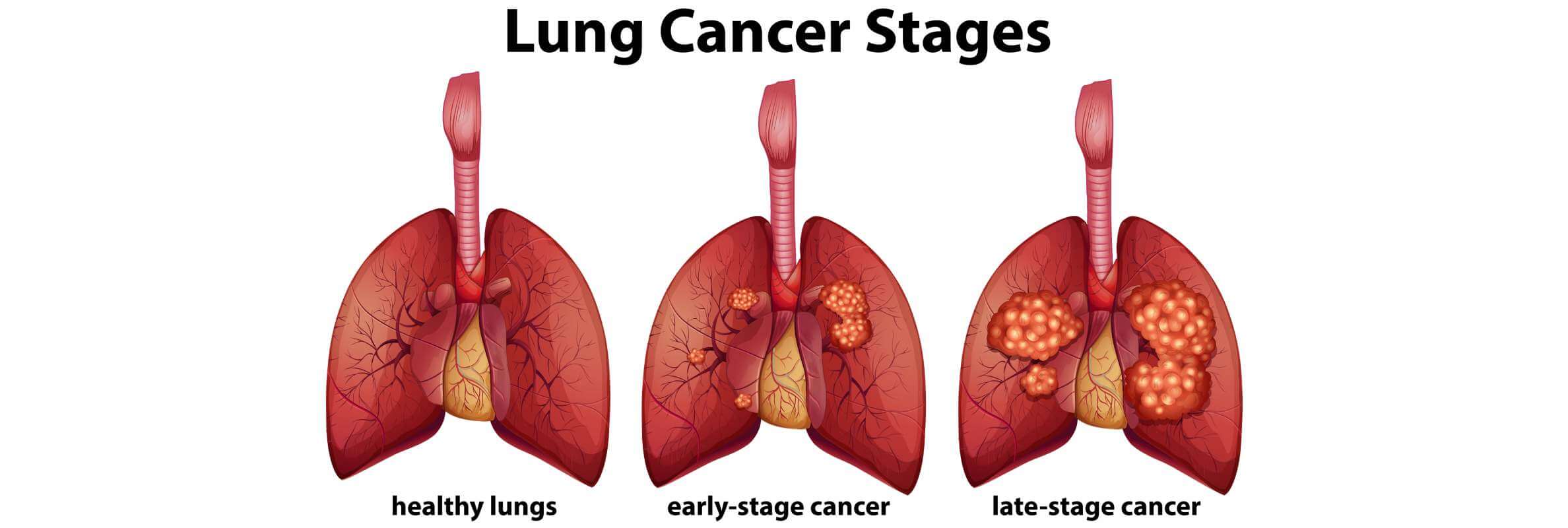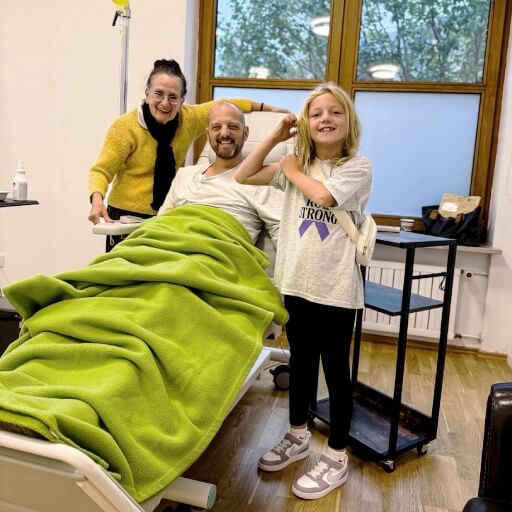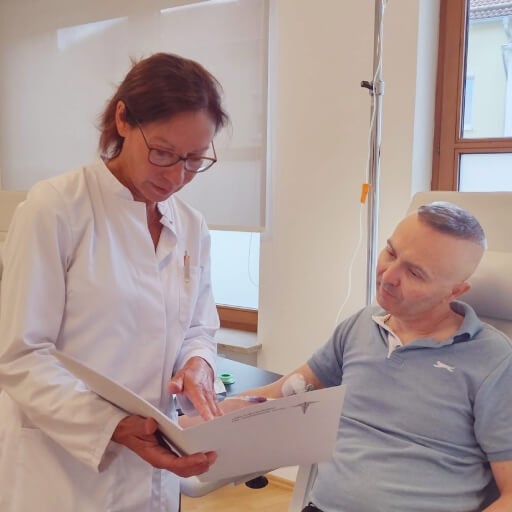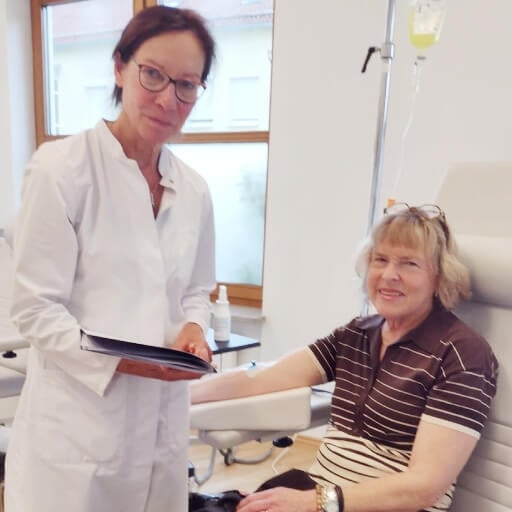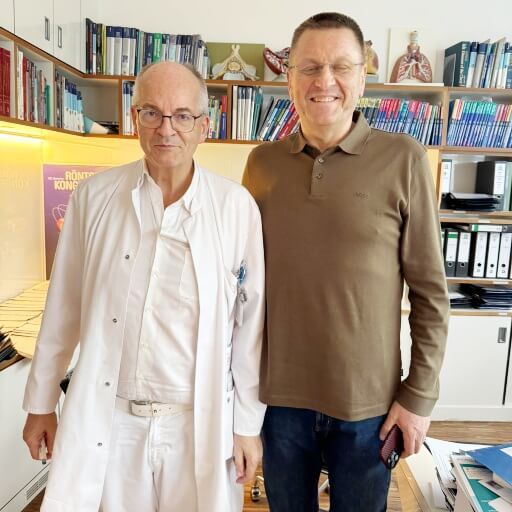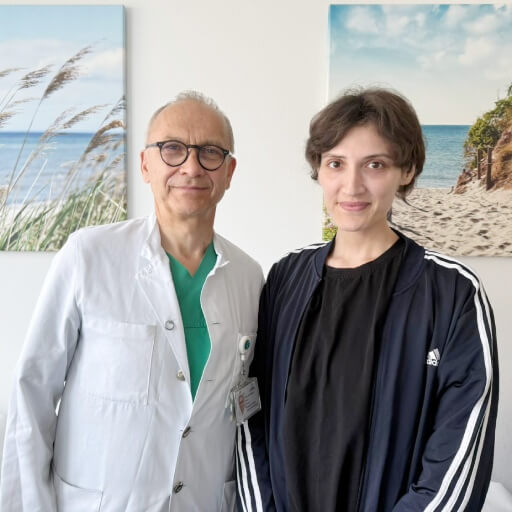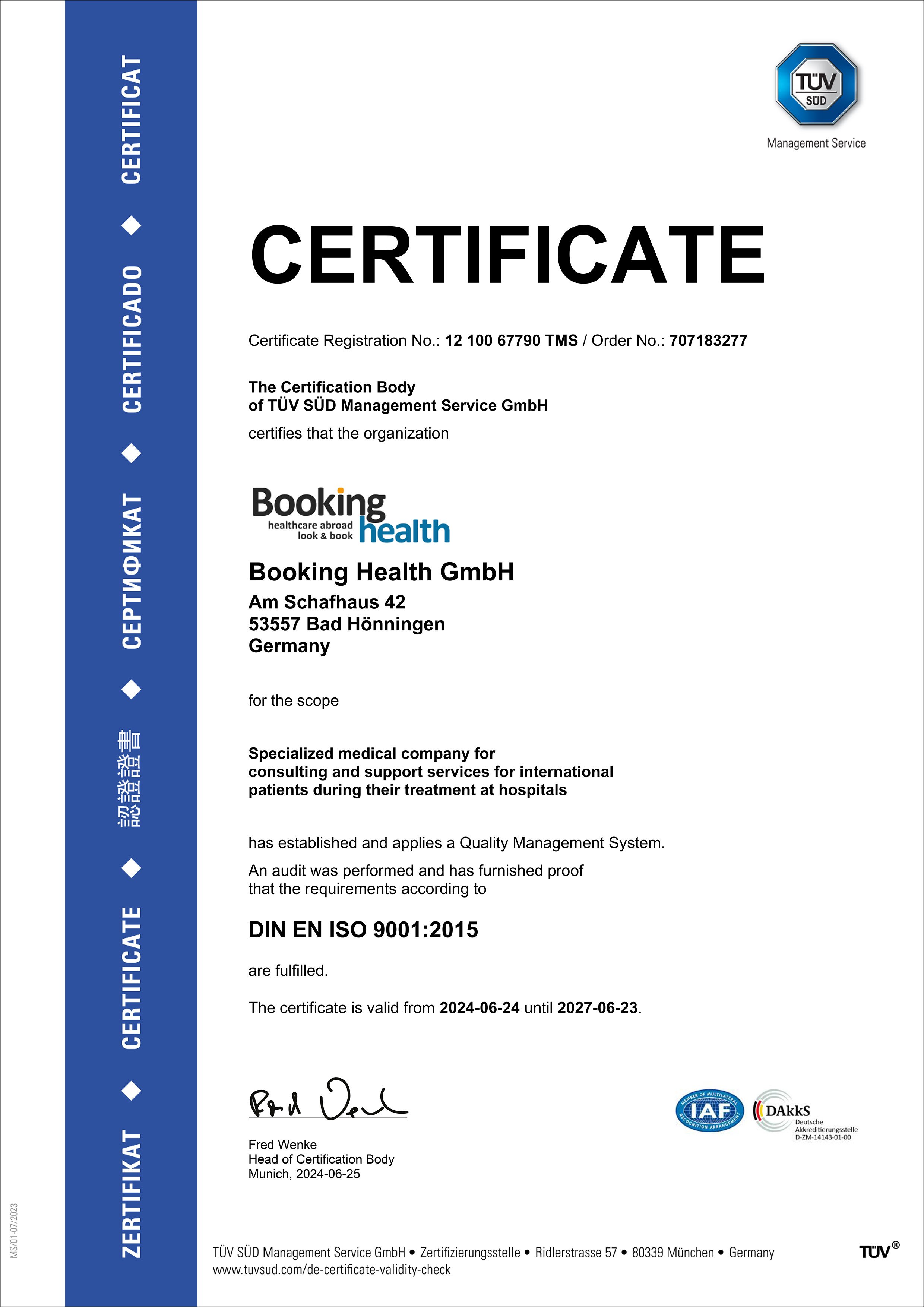Stage 4 lung cancer is also known as metastatic or advanced lung cancer. Simply said, the disease has spread beyond the lungs to distant parts of the body to the liver, brain, bones, or the other lung. As reported in the research, this stage is often associated with a challenging prognosis. However, innovative treatment options are providing stage 4 cancer patients with hope.
When you take a look at recent statistics, you see that lung cancer is one of the most prevalent and deadly cancers in the world. For example, in 2022, there were approximately 2.48 million new cases and 1.82 million deaths globally [1]. However, the high mortality rate is largely due to late-stage diagnoses, as the professionals argue. In fact, literature shows that many cases are identified only after the cancer has advanced.
This is why it is necessary to remember that early detection of lung cancer significantly improves survival rates. For example, as the evidence demonstrates, the five-year survival rate for stage IA lung cancer can exceed 90% [2]. Yet, the issue is that only about 27.4% of lung cancer cases are diagnosed at an early stage [3]. This is often because early-stage lung cancer may not present with noticeable symptoms. As a result, there are delays in diagnosis and, consequently, treatment.
Unfortunately, without treatment, the prognosis for stage 4 lung cancer is poor. As the research data indicates, survival times can vary. However, studies report that untreated non-small cell lung cancer patients may live between 5 to 12 months [4]. On the other hand, those with small cell lung cancer may survive 3 to 15 months. From this perspective, we want to discuss how important it is to implement timely and effective treatment interventions.
Stage 4 Lung Cancer Diagnosis
Overall, diagnosing stage 4 lung cancer requires healthcare professionals to use a combination of methods. Usually, these include imaging studies, tissue sampling, and molecular testing. As argued, the use of these techniques allows to determine the cancer's extent. Moreover, the results help guide personalized treatment strategies.
Imaging Studies
- PET/CT scans combine positron emission tomography and computed tomography. As a result, these scans help detect areas of high metabolic activity.
- MRI provides detailed images of soft tissues. It is thanks to these images that healthcare professionals can identify metastases in the brain or spinal cord.
Tissue Biopsy
- Tissue biopsy involves removing a sample of lung tissue (i.e., through bronchoscopy or needle aspiration) for microscopic examination to identify cancer cells.
- Liquid biopsy, on the other hand, is a less invasive method. It analyzes circulating tumor DNA (ctDNA) in the blood. This allows to provide information on genetic mutations. In addition, this approach helps monitor treatment response.
Molecular Testing and Biomarkers
- Biomarker testing detects mutations (e.g., EGFR, ALK, and ROS1); these can be targeted with specific therapies. As the evidence suggests, its application improves treatment efficacy.
- PD-L1 expression is assessed to determine the potential benefit from immunotherapy. Specifically, higher PD-L1 levels may predict better responses.
Lung Cancer Subtypes
- Non-small cell lung cancer (NSCLC) accounts for 85% of cases. In particular, adenocarcinoma is the most common subtype, as stated in the research; it is often associated with specific genetic mutations.
- Small cell lung cancer (SCLC) is a more aggressive form. It typically spreads quickly. It is due to this trait that SCLC requires different treatment approaches.
Overall, as we would like to note, accurate diagnosis through these methods enables the development of a personalized treatment plan. In turn, the individualized plan increases the likelihood of effective management of stage 4 lung cancer.
Benefits and Limitations of Standard Protocol Treatments for Stage 4 Lung Cancer
In general, standard treatments for stage 4 lung cancer aim to achieve several objectives. These include the following: 1) to control disease progression, 2) to alleviate symptoms, and 3) to improve quality of life [5], [6].
Chemotherapy utilizes cytotoxic drugs to target and destroy quickly dividing cancer cells. As many know, this treatment can shrink tumors and extend survival. However, as the research evidence reports, it often comes with side effects; these include fatigue, nausea, and increased infection risk. As for the median survival for patients undergoing chemotherapy, we would like to note that it varies. However, according to studies, it is generally between 6 and 12 months.
Radiotherapy involves the use of high-energy radiation to kill cancer cells. However, in 4 stages lung cancer, it is used for palliative purposes (e.g., relieving pain or controlling symptoms like bleeding). For example, techniques like stereotactic body radiation therapy (SBRT) allow to target tumors precisely. As argued in literature, such approaches minimize damage to surrounding healthy tissue.
Surgical intervention is less common in stage 4 lung cancer. This is due to the widespread nature of the disease. However, we would like to note that procedures like resection can be considered to remove isolated tumors but only in cases where metastasis is limited. Typically, the decision to pursue surgery depends on various factors. Some of them include the patient's overall health and the cancer's specific characteristics.
Hyperthermia therapy involves raising the temperature of tumor tissues; the aim is to enhance the effectiveness of other treatments (e.g., chemotherapy and radiotherapy). This method increases blood flow and oxygenation in the tumor area, as the research states. By doing so, hyperthermia can make cancer cells more susceptible to damage.
Immunotherapy utilizes the body's immune system to recognize and attack cancer cells. For example, clinical trials have demonstrated that a combination of immunotherapy agents can improve survival rates in patients with advanced NSCLC.
In other words, these standard stage 4 lung cancer treatments offer benefits. However, we want to stress that they also have limitations. As discussed above, these include side effects and varying effectiveness among individuals. As a result, scientists and healthcare professionals are interested in innovative therapies. This is because they provide more personalized and targeted approaches to treating stage 4 lung cancer.
Germany's Approaches to Lung Cancer Treatment Stage 4
Germany is recognized as a leader in advanced treatment of lungs cancer stage 4. As many international patients report, the country offers innovative therapies and comprehensive care.
Dendritic Cell Therapy for Stage 4 Lung Cancer
Dendritic cell therapy is considered a significant innovation in personalized immunotherapy and treatment of lung cancer stage 4. However, we understand that you may wonder what dendritic cells are. To be specific, dendritic cells are antigen-presenting cells that initiate and regulate adaptive immune responses. In dendritic cell therapy, the process is rather simple: a patient's own dendritic cells are extracted, cultured, and exposed to tumor-specific antigens in vitro. Then, these prepared cells are reintroduced into the patient. As argued in literature, the aim of this process is to stimulate a T-cell-mediated attack on cancer cells.
In addition, we believe that it is worth mentioning that a Canadian immunologist named Ralph M. Steinman was the one who conducted the foundational work on dendritic cells. He discovered these cells in 1973. In particular, Steinman's research explained the role of dendritic cells in adaptive immunity. As a result, he earned the Nobel Prize in Physiology or Medicine in 2011 [7].
Overall, dendritic cell therapy is a new treatment for stage 4 lung cancer. However, its efficacy is enhanced by identifying specific biomarkers and tumor antigens unique to each patient. In other words, this treatment is 100% individualized. This personalization ensures that the immune response is precisely directed against the cancer cells. Therefore, this approach can potentially improve treatment outcomes. Moreover, it can reduce adverse effects.
Interventional Radiology for Stage 4 Lung Cancer
Interventional radiology (IR) has changed how stage 4 lung cancer is managed and treated. In particular, as the evidence states, this treatment for stage 4 lung cancer is beneficial for patients who are not candidates for surgery or systemic therapies.
Stereotactic Body Radiation Therapy (SBRT), as discussed earlier, delivers high doses of radiation to tumors with sub-millimeter accuracy over a few sessions. As reported, this technique is especially effective for treating small, well-defined lung tumors. For example, studies have shown that SBRT achieves local control rates of up to 92% at three years and 39% at five years. Therefore, it outperforms traditional radiotherapy in long-term survival outcomes.
CyberKnife® System is a robotic SBRT platform that tracks tumor movement in real-time. What makes this approach so effective is it allows for precise radiation delivery even as the patient breathes. In particular, this technology is useful to treat tumors located near critical structures in the chest. Therefore, as evident, it offers an effective option for stage 4 cancer patients with inoperable lung tumors.
Radiofrequency Ablation (RFA) involves inserting a needle-like probe into the tumor to deliver heat generated by radio waves. Due to this, it can effectively destroy cancer cells. Typically, this procedure is performed under imaging guidance. As the research reports, it is suitable for patients with small tumors or those who cannot undergo surgery. For example, the evidence shows that RFA has demonstrated complete ablation rates of 80-90% in selected patients.
Microwave Ablation (MWA), in turn, utilizes electromagnetic waves to generate heat, destroying cancerous tissue. MWA, unlike RFA, does not rely on electrical conductivity. This allows for larger and faster ablation zones. In particular, this method is effective for treating larger tumors and those located near blood vessels. It reduces the "heat sink" effect that can compromise treatment efficacy. According to literature, similar to RFA, MWA is typically performed under imaging guidance. This ensures precise targeting of the tumor. At the same time, it helps minimize damage to adjacent structures.
Laser Ablation uses focused light energy to heat and destroy cancerous tissue. As discussed in scientific studies, this method of treatment for lung cancer stages 4 is less commonly used. However, it can be effective for certain tumor locations and sizes. In addition, it should be mentioned that laser ablation is often considered when other ablation techniques are not feasible.
Cryoablation, on the other hand, involves the application of extreme cold to freeze and destroy cancer cells. Specifically, a probe is inserted into the tumor under imaging guidance; argon gas is used to create an "ice ball" that encompasses the tumor. As the evidence demonstrates, this technique is advantageous for tumors located near sensitive structures. This is because the freezing process is less likely to damage surrounding tissues. In addition, it should be noted that the ice ball is visible on imaging. This allows for real-time monitoring of the ablation zone. According to the research data, cryoablation is associated with minimal pain and a low risk of complications. This is why it is suitable for patients who cannot tolerate more aggressive treatments.
Electrochemotherapy (ECT) combines chemotherapy with electrical pulses to enhance drug uptake by cancer cells. To be exact, after administering a chemotherapeutic agent, short, intense electric pulses are applied to the tumor area. This increases cell membrane permeability and allows more of the drug to enter the cells. In particular, this method is useful for tumors located near vital structures; it minimizes damage to surrounding tissues. As the available evidence demonstrates, ECT has shown positive results in palliative settings: the method improves local tumor control and patient quality of life.

Transarterial Chemoembolization (TACE)is a procedure where chemotherapy drugs are delivered directly into the arteries feeding the tumor; it is followed by the injection of embolic agents to block blood flow. In other words, this approach traps the chemotherapy within the tumor and deprives it of nutrients. As a result, it enhances the treatment's effectiveness. We would like to note that TACE is a new treatment for lung cancer stage four. In particular, it is beneficial for patients with tumors that are not amenable to surgery or systemic chemotherapy. Moreover, it can also be combined with other treatments (e.g., immunotherapy or radiation) to improve outcomes.
Prof. Kovács: Why TACE Doubled Cancer Survival – What Patients Need to Know
Advantages of IR Techniques for Final Stages of Stage 4 Lung Cancer
- Targeted treatment provides precision; this minimizes exposure to healthy tissues.
- IR techniques have lower risk of complications (compared to systemic therapies).
- Many IR treatments are performed on an outpatient basis.
- If necessary, procedures can be repeated.
Overall, as the discussion provided above demonstrates, the integration of advanced IR techniques into the treatment protocol can improve outcomes. Moreover, the evidence supports that access to effective, less invasive options can improve quality of life. Furthermore, it can potentially extend survival of patients with stage 4 lung cancer.
| Characteristics/Therapy type | 2-Year Survival Rate | Response Rate | Duration | Side Effects |
|---|---|---|---|---|
| Standard Treatment | ~25% for advanced cancer | Less than 10% | Several cycles | Severe (nausea, fatigue, hair loss, immunosuppression, skin irritation) |
| Innovative Methods | ~60% for advanced cancer | 45-65% | Up to 4 sessions | Mild (localized discomfort) |
* Booking Health data
What Is the Best Treatment Center for Stage 4 Lung Cancer?
Best treatment for stage 4 lung cancer always requires expertise beyond the standard one. Metastatic disease requires combining systemic therapies with local interventions. Molecular profiling to target cancer wherever it spreads is a must as well. The best hospital for stage 4 lung cancer provides clinical trials; it tests immunotherapies, personalized treatment based on tumor genetics, alternative treatments for stage 4 lung cancer, etc. These specialized institutions see hundreds of stage 4 cases annually, building unparalleled expertise in managing complex metastatic patterns and treatment resistance.
| Hospital | Location | Stage 4 Specializations | Technologies for Metastatic Disease |
|---|---|---|---|
| Memorial Sloan Kettering Cancer Center | New York, USA | 1,200+ lung surgeries annually; salvage surgery for stage 4; comprehensive genomic testing; clinical trials for resistant disease | Liquid biopsies, KRAS-G12C targeted therapies, personalized cancer vaccines; 75% 5-year survival for stage 4 salvage surgery |
| Mayo Clinic | Rochester, MN (+ AZ, FL), USA | Multidisciplinary tumor boards; personalized vaccine trials for advanced disease; ablation therapies | Robotic bronchoscopy, proton beam therapy, cancer vaccine development, advanced immunotherapy combinations |
| University Hospital RWTH Aachen | Aachen, Germany | Interventional radiology for inoperable metastases; 300,000+ patients annually; interdisciplinary cancer center | Radiofrequency/microwave ablation (80-90% complete tumor destruction), VATS, Da Vinci robotic system, hybrid operating rooms |
| University Hospital Jena | Jena, Germany | Integrative medicine for stage 4; minimally invasive approaches; 26 specialized departments coordinate care | Da Vinci RATS lobectomy, VATS, Nd:YAG laser surgery for metastases, bronchoplasty preserving lung function |
| ViDia Hospital Karlsruhe | Karlsruhe, Germany | DKG Lung Cancer Center since 2011; 80%+ minimally invasive surgeries; specialized metastatic protocols | Radiofrequency ablation for metastases, laser therapy, cryotherapy, VATS, bronchoplasty/angioplasty |
Memorial Sloan Kettering Cancer Center carries out stage 4 care with outcomes better than conventional expectations. As statistics shows, stage 4 patients who underwent salvage surgery achieved 75% five-year survival versus just 25% for systemic therapy alone. The center's comprehensive genomic testing identifies targetable mutations in hundreds of genes, matching patients to therapies designed for their tumor's molecular profile. Clinical trials combine drugs with experimental antibodies, shrinking inoperable tumors enough for surgical removal – patients told they had six months now measured in years. Liquid biopsy allows to monitor treatment response.
Mayo Clinic's Lung Cancer Program is for innovation. Weekly tumor boards unite specialists planning a fight against metastatic disease. Personalized cancer vaccines train immune systems to hunt metastases throughout the body, reducing spread in advanced disease. Robotic bronchoscopy delivers ablation therapy – heat, cold, electricity – directly to deep lung tumors during same-day procedures. For oligometastatic disease, Mayo combines surgical resection with stereotactic radiation and immunotherapy: this is about long-term control rather than palliation only.
University Hospital RWTH Aachen is famous for interventional radiology that is used when surgery isn't possible. Radiofrequency and microwave ablation destroy tumors with controlled heat – this leads to complete destruction in 80-90% of selected stage 4 patients. When cancer spreads to both lungs or multiple organs, interventional radiologists navigate catheters through vessels to deliver treatment regardless of location. Hybrid operating rooms are another benefit: these are simultaneous imaging and intervention with 3Tesla MRI guidance. The comprehensive cancer center ensures no patient exhausts options prematurely.
University Hospital Jena provides integrative medicine considering the whole patient – not just cancer, but comorbidities, quality of life, family circumstances. Da Vinci robotic surgery removes metastatic lesions while preserving maximum lung function – critical when patients need every bit of respiratory capacity. Nd:YAG laser destroys airway-blocking tumors. 26 departments of the healthcare facility create a coordinated net. Metastases to brain? Neurosurgery coordinates with oncology. And so on.
ViDia Hospital Karlsruhe holds German Cancer Society Lung Cancer Center certification for high stage 4 treatment standards. Over 80% of surgeries use minimally invasive techniques – this may be vital because rapid recovery is important for subsequent chemo and immunotherapy. Radiofrequency ablation treats lung and liver metastases, cryotherapy freezes tumors when heat risks damaging nearby structures. Laser therapy restores breathing function. Bronchoplasty preserves healthy tissue during extensive resections, maintaining respiratory function essential for long-term treatment.
Treating hundreds of advanced cases annually, these healthcare facilities have information about every complication and resistance pattern possible. Clinical trial access provides experimental combinations unavailable elsewhere. Multidisciplinary teams offer and carry out systemic therapy, surgery, ablation, and radiation seamlessly. What is important for stage 4 patients, specialized centers mean more options and, thus, better outcomes.
Susan Clark Livingston: A Stage 4 Lung Cancer Patient's Experience
Susan Clark Livingston (65) was first diagnosed with recurrent right-sided multifocal breast cancer (ER+, HER2- IHC 2+) in October 2023. Later, she was also diagnosed with stage IV lung adenocarcinoma carrying a HER2 ex20ins mutation and PD-L1 negativity.
In the United States, she was told that she only had six months left to live. Despite this, Susan and her daughter, Julia, decided to fight. So, they sought care at LDG Laboratories in Germany. At this facility, Prof. Dr. Gansauge and Dr. Taubert developed a personalized therapeutic approach, which resulted in impressive outcomes.
Now, more than a year and a half later, Susan continues to live an active life. Her daughter shared that Susan still runs almost every morning. She also expressed her gratitude to the entire medical team and Booking Health, saying that the clinic felt "sunny, beautiful, and homey – not like a hospital at all."
Julia believes that the treatment will continue to work, and her mom will live a long and happy life.
Life After Diagnosis: How Personalized Care Benefits Stage 4 Lung Cancer Patients
It is challenging to receive a diagnosis of stage 4 lung cancer. However, it is important to understand that it does not mean an immediate end. As we discussed throughout this article, recent advancements in personalized care have changed the prognosis for many patients. In particular, new approaches allow doctors to enhance quality of life and extend survival.
Specifically, personalized treatment plans consider a patient's unique genetic makeup, lifestyle, and overall health. In other words, therapies are completely individualized. This means that treatment strategies are developed to target specific characteristics of the cancer. As a result, they potentially lead to more effective outcomes and fewer side effects. It is this alignment of treatment strategies with individual needs that helps patients experience improved well-being and a better quality of life.
Of course, we do not deny that stage 4 lung cancer presents serious challenges. Yet, many patients find hope through personalized care plans that prioritize their values and preferences. After all, when treatments align with individual goals, patients can maintain a sense of control over their condition. Moreover, they can make informed decisions that reflect their desires and improve their overall experience.
Advanced Cancer Treatment: Patient Success Stories with Booking Health
Frequently Asked Questions About Stage 4 Lung Cancer
Send request for treatmentYes, remission is possible. While a cure is rare, treatments can reduce tumor size and alleviate symptoms, leading to periods of remission.
Survival is challenging but achievable. Some patients live beyond five years, especially with personalized treatment plans.
Genetic testing identifies mutations like EGFR or ALK, guiding the use of targeted therapies that can be more effective and have fewer side effects.
Metastasis indicates cancer spread, necessitating systemic treatments like chemotherapy or immunotherapy to address cancer throughout the body.
New treatments for lung cancer stage 4, such as targeted therapies and immunotherapy, have improved outcomes, particularly in patients with specific genetic markers, offering better survival rates and quality of life.
Diagnosis involves imaging tests (CT and PET scans), biopsies, and molecular testing to determine cancer type and extent.
Life expectancy varies. Some live months, others years, depending on factors such as overall health and response to treatment.
Progression varies, with some lung cancers advancing rapidly, while others take years. Regular screenings are crucial for early detection.
Currently, it is not curable, but treatments can manage the disease, prolong life, and improve comfort.
It is considered advanced and serious, but not immediately terminal. Many live meaningful lives with appropriate care.
Options include chemotherapy, targeted therapy, immunotherapy, radiation, and palliative care, often used in combination.
Symptoms may include persistent cough, chest pain, shortness of breath, fatigue, and weight loss.
Imaging may reveal tumors in both lungs, fluid accumulation, or metastases in other organs.
Prognosis of 4th stage lung cancer depends on factors like cancer subtype, genetic mutations, overall health, and treatment response.
Average life expectancy ranges from 4 to 13 months, but some patients live longer with effective treatment.
The 5-year survival rate of patients with lung cancer 4th stage is approximately 5%, but newer treatments are improving these statistics.
Standard treatments include chemotherapy, targeted therapy, immunotherapy, and radiation, tailored to individual cases.
Surgery is rare but may be an option if metastases are limited and accessible.
As a lung cancer stage 4 treatment, radiation can alleviate symptoms, control tumor growth, and is often used palliatively.
Immunotherapy enhances the immune system's ability to recognize and attack cancer cells, offering a promising treatment pathway.
Yes, several innovative therapies have emerged for stage four lung cancer treatment. Dendritic cell-based immunotherapy has shown promise in enhancing overall survival and progression-free survival when combined with chemotherapy in patients with advanced non-small cell lung cancer. In addition, interventional radiology techniques such as electrochemotherapy (ECT) and transarterial chemoembolization (TACE) offer targeted treatment options, delivering therapies directly to tumors while minimizing systemic exposure.
Best treatment for stage 4 lung cancer with metastases in 2025 includes dendritic cell therapy combined with interventional radiology. New therapies for stage 4 lung cancer show 60% 2-year survival rates versus 25% with standard approaches.
Yes, innovative methods cause only mild localized discomfort compared to severe effects from standard treatment. Chemotherapy vs immunotherapy for stage 4 lung cancer shows immunotherapy offers better tolerance and improved quality of life when you live with stage 4 lung cancer and treatment.
Absolutely. Modern approaches achieve 45-65% response rates versus less than 10% with conventional methods. Stage 4 lung cancer treatment options by mutation type, like ALK-positive patients, show remarkable responses to targeted therapies.
Cost of lung cancer treatment in Germany vs USA varies significantly. Germany offers comprehensive innovative treatment packages, and affordable lung cancer treatment options in Europe provide substantial savings compared to American healthcare costs.
Yes, many innovative treatments in Germany fall within this budget range. Dendritic cell therapy and interventional radiology procedures are cost-effective options.
Germany demonstrates excellent outcomes with innovative methods, achieving 60% 2-year survival rates. Patients can expect comprehensive care plans and understanding of what to expect from stage 4 lung cancer treatment plan through personalized consultations.
Stage 4 lung cancer treatment without chemotherapy includes dendritic cell therapy, interventional radiology techniques like TACE, RFA, and laser ablation. These alternatives offer effective tumor control without traditional chemotherapy side effects.
Booking Health provides comprehensive support for international treatment access. They handle all logistics from medical documentation to accommodations, connecting patients with leading specialists offering the most advanced treatment options available.
The 2-year survival rate for stage 4 lung cancer is ~25% with standard therapy. However, it can increase to ~60% with innovative approaches (e.g., IR techniques, immunotherapy, etc.).
Standard regimens for stage 4 lung cancer usually involve several chemotherapy cycles over months. On the other hand, innovative options can be completed in up to 4 sessions.
Choose treatment abroad and you will for sure get the best results!
Authors:
This article was edited by medical experts, board-certified doctors Dr. Nadezhda Ivanisova, and Dr. Bohdan Mykhalniuk. For the treatment of the conditions referred to in the article, you must consult a doctor; the information in the article is not intended for self-medication!
Our editorial policy, which details our commitment to accuracy and transparency, is available here. Click this link to review our policies.
Sources:
[1] Rajesh Sharma, Jagdish Khubchandani. Global, Regional, and National Burden of Tracheal, Bronchus, and Lung Cancer in 2022: Evidence from the GLOBOCAN Study. Epidemiologia (Basel). 2024 Dec 17;5(4):785-795. doi: 10.3390/epidemiologia5040053. [DOI] [PubMed]
[2] Jing Ning, Tao Ge, Minlin Jiang, Keyi Jia et al. Early diagnosis of lung cancer: which is the optimal choice? Aging (Albany NY). 2021 Feb 11;13(4):6214–6227. doi: 10.18632/aging.202504. [DOI] [PMC free article]
[3] American Lung Association. New Report: Lung Cancer Survival Rate Improves, But Gaps in Biomarker Testing and Lack of Screening Hinder Progress https://www.lung.org/media/press-releases/state-of-lung-cancer-2024
[4] VeryWellHealth. Lung Cancer Survival Without Treatment. https://www.verywellhealth.com/lung-cancer-survival-without-treatment-3971880
[5] Cancer Research UK. Stage 4 lung cancer. https://www.cancerresearchuk.org/about-cancer/lung-cancer/stages-types-grades/stage-4
[6] Healthline. What to Expect with Stage 4 Lung Cancer. https://www.healthline.com/health/stage-4-lung-cancer-prognosis
[7] Roman Volchenkov, Florian Sprater, Petra Vogelsang, Silke Appel. The 2011 Nobel Prize in physiology or medicine. Scand J Immunol. 2012 Jan;75(1):1-4. doi: 10.1111/j.1365-3083.2011.02663.x. [DOI] [PubMed]
Read:
Treatment of stage 4 lung cancer in Germany
Article menu:
- Stage 4 Lung Cancer Diagnosis
- Benefits and Limitations of Standard Protocol Treatments for Stage 4 Lung Cancer
- Germany's Advanced Approaches to Stage 4 Lung Cancer Treatment
- What Is the Best Treatment Center for Stage 4 Lung Cancer?
- Susan Clark Livingston: A Stage 4 Lung Cancer Patient's Experience
- Life After Diagnosis: How Personalized Care Benefits Stage 4 Lung Cancer Patients
- Frequently Asked Questions About Stage 4 Lung Cancer
Don't know where to start?
Contact Booking Health